You are reading the older HTML site
Positive Feedback ISSUE
42march/april 2009
The Acoustic Revive Chronicles, Chapter 6
by Jeff Day
Welcome to the Acoustic Revive Chronicles, Chapter 6. This is the third installment of the Acoustic Revive Chronicles here at Positive Feedback Online, the first being Chapter 4 in Issue 39, and the second being Chapter 5 in Issue 40 (for Chapters 1-3 search the archives at 6Moons.com).
I get quite a lot of reader e-mail related to the Acoustic Revive lineup. Some of the more entertaining subject lines for those e-mails have read: "A Holy Cr** Experience!", "Oh My God!", and "F***ing Unbelievable!". Even my jaded fellow reviewers and local audio pals have laid down their own hard-earned long green for Acoustic Revive products after experiencing them, and that doesn't happen all that often with that hard to impress crowd.
Those who have been following the Acoustic Revive Chronicles know all about Mr. Ken Ishiguro and his impressive design work that has created the Acoustic Revive system & room tuning products, but for those who are just tuning in (inadvertent pun) let me provide you a little background primer.
Mr. Ken Ishiguro's design goal is provide products through the Acoustic Revive brand that help voice one's Hi-Fi system so that it will play a recording "so that it sounds natural and not as though it is being played back over an electrical device." Those who have been following my writing know that's exactly the kind of products I want in my own system. Or as Jim Smith puts it in his excellent book Get Better Sound, this is the "going for the musical balance before going for the audiophile sound effects" approach (you should get a copy of Jim's book if you haven't already).
You can only go so far in achieving a musical balance with careful setup of your home audio system, and beyond that some definitive choices are required in the realm of equipment and accessories. I have found over my years of reviewing Hi-Fi gear that some audio equipment just does not seem to be capable of achieving the sort of natural musical balance I prefer on its own, no matter how careful I am in system setup. Even when set up with the goal of achieving a natural tonal balance in mind, some Hi-Fi gear still sounds overly analytical, mechanical, and too lean. Usually this sort of gear has lots of soundstaging information, presents a big billowing soundspace, and has lots of detail recovery, but it fails to get the relaxed presence, saturated tonal colors, forward momentum, body, musically expressive subtleties, and natural warmth that I hear (and crave) in live music.
So with that context in mind, lets get back to Acoustic Revive: Ken-San's design goal of providing products that helps voice one's Hi-Fi system so that it will play a recording "so that it sounds natural and not as though it is being played back over an electrical device" is particularly meaningful to me, and I think, also to those who have a lot invested in a system and want to take it to that next step of natural musicality. I think the Acoustic Revive brand name for these products is spot-on, because they really do help revive the natural acoustic life contained in recorded music. Hopefully by reading through the various Chapters of the Acoustic Revive Chronicles you'll get some ideas about which of these products might best help you get your system moving more in that direction.
In my ongoing survey of Acoustic Revive products the RR-77 Schumann generator, the RGC-24 Grounding Conditioner, and the RPT Ultimate Power Supply Boxes (combined with the Power Reference power cables), for example, have all had major transformative effects on my Hi-Fi rig. If you are looking for a place to start exploring the Acoustic Revive products you can't go wrong with any of those. I have been impressed by the enormous improvement in my system's performance that these products have provided, both individually, and as an additive whole.
Here is a brief summary of what I've learned about the Acoustic Revive products up to now: What I hear the Acoustic Revive products doing primarily in my system is improving the musical attributes of recordings. The timbre, meter, tonality, harmony, beat, tempo, syncopation, and melody all became more convincingly natural and life-like as I've added in different AR products. The overall effect has been to make the music more dramatic, bigger, more exciting, and more entertaining—more like you experience in life—more naturally life-like.
Also, I found that in many cases the sonic attributes of recording artifacts improved as well: things like soundstaging, imaging, transparency, perspective, and the sense of recorded space became more tangible and vivid. I must confess that I am not particularly focused on increasing the presence of those type of audiophile-style sound effects in my Hi-Fi rig, as I feel voicing a system specifically for those attributes often does far more damage to the music than it provides benefit from a sound-effects-for-entertainment standpoint. If those recording artifact attributes are improved in such a way that they act as a spice to add a little zest to the music I'm fine with it, but when the spice overpowers the flavor of the dish itself, so to speak, and my attention is drawn away from the music by the sonic artifacts of the recording process, then I'm not ok with it.
Fortunately the Acoustic Revive products provide a very nice balance of providing a big dose of improving the musical attributes, with an appropriately sized addition of sonic improvements that spices things up without diminishing the music, with the net effect being that I'm drawn deeper into the music. So all-in-all, the Acoustic Revive products have been winners in my home audio system, and have been getting me ever closer to Ken-San's (and my own) goal of a home audio system that "sounds natural and not as though it is being played back over an electrical device."
The Acoustic Revive RWL-3 Acoustic Conditioner - $1395 US
The RWL-3 Acoustic Conditioner is one of the most exotic and esoteric devices—even by Acoustic Revive standards—that I have come across in home audio. In principle you would think the RWL-3 would be a simple enough device given that it is an acoustic panel designed to "tune and diffuse" reflected sound that can degrade the music listening experience, but that's not really the case.
The RWL-3 is a physically large panel (approximately 47 inches tall, 26 inches wide, and 3 inches deep) that contains vertical foam core channels of differing depths spread horizontally across its front surface. The foam used has Tourmaline (a piezoelectric mineral that reduces static electricity through the release of negative ions) incorporated into it. Acoustic Revive optimized the depth of the channels and the curve across the panel through computer modeling, and by doing literally hundreds of listening tests on hundreds of prototypes, before arriving at what they felt was the optimum combination. They believe the final design provides the widest possible dispersion for the optimal treatment of undesirable room reflections, echoes, and standing waves.
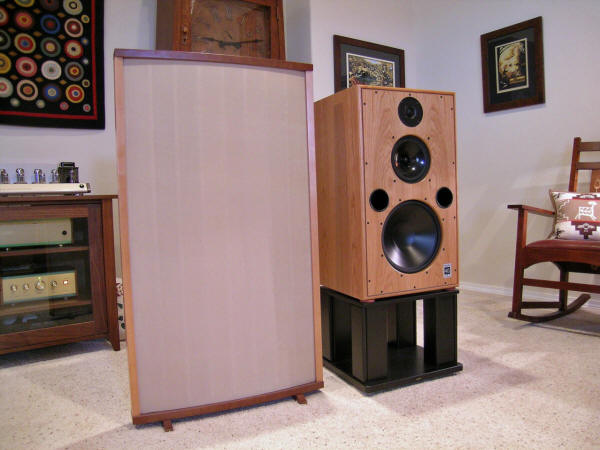
Acoustic Revive says the RWL-3 does not absorb sound like many room treatments do (they feel absorptive panels have the deleterious effect of damping down the musical flow), but rather the RWL-3 panels optimally diffuse unwanted room reflections, echoes, and standing waves, thus neutralizing their unwanted effects on loudspeakers. So Acoustic Revive's intent for the RWL-3 panels is that if I use them in my listening room, then my Harbeth Monitor 40.1 loudspeakers should be able to deliver all of the openness, tunefulness, and natural sound designed into them without being compromised by deleterious room effects.
But I'm getting ahead of myself, so let's get back to the RWL-3's construction: Acoustic Revive covers the foam core channel structure with natural silk containing Tourmaline which is a piezoelectric mineral that reduces static electricity through the release of negative ions. Acoustic Revive points out that not just any natural silk is used in the RWL-3, but that the silkworms that produce the silk for the RWL-3 are actually fed leaves with Tourmaline powder added to them, so that the resulting silk has Tourmaline incorporated into its very fibers—I told you the RWL-3s were exotic!
Acoustic Revive says that the end result of the carefully modeled acoustic channels, the natural silk, the hardwood frame, and the clever incorporation of Tourmaline, is that the RWL-3 will improve your room acoustics so that your loudspeakers are able to give you all of the performance designed into them. Acoustic Revive says that what you will hear is a smooth and natural response from your loudspeakers, a clearer window into the soundstage, increased resolution of detail, and all of the natural tone your speakers can deliver. Acoustic Revive says that if you treat your room with the RWL-3 "we are confident that your room acoustic will exceed studios". The RWL-3 acoustic panel can be used as a single device, or as multiples positioned strategically in different parts of the listening room.
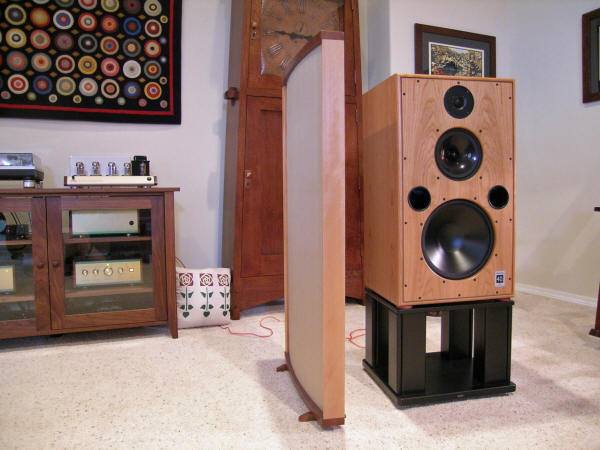
Ok, that's enough about the design and concepts behind the RWL-3 Acoustic Conditioner for now, so let's move on and talk about the design and concepts behind the CB-1DB Receptacle Base Plate, the CFRP-1F Carbon Fiber Outlet Plate, and the CS-F2 Outlet Stabilizer.
The Acoustic Revive CB-1DB Receptacle Base Plate, the CFRP-1F Carbon Fiber Outlet Plate, and the CS-F2 Outlet Stabilizer
You know how equipment footers and isolation platforms improve the sonics of your gear by reducing or eliminating the mechanical vibration coming up through your equipment stand from the floor? The idea is that when your Hi-Fi equipment is rattled around by vibration it introduces electrical noise into the signal path that degrades the signal-to-noise ratio of the electronics, resulting in poorer sound from your Hi-Fi rig. By reducing the vibration you increase the signal-to-noise ratio, allowing your equipment to function as it was designed to, the result being better quality sound. When you put in devices that truly decouple your Hi-Fi gear from vibration, the improvement can truly be astounding, both from a musical and audiophile sonic perspective.
Acoustic Revive points out, that while it may not be immediately obvious, when you decouple your gear from floor borne vibration via footers, isolation platforms, and the like, there is still a major source of vibration that goes directly into your electronics that you haven't yet addressed, and may not have even realized was present—the vibration path from the AC mains connection that goes directly into each component. Acoustic Revive says that the AC outlet serves as a source of vibration transmission directly into your equipment, from both normal floor borne mechanical vibration and the vibration produced by the 60Hz cycling of AC in the power grid. So essentially, your power cord serves as a vibrational link from the AC outlet to your electronics, degrading their signal-to-noise ratio, and thereby reducing their audio performance.
So the idea behind the CB-1DB Receptacle Base Plate, the CFRP-1F Carbon Fiber Outlet Plate, and the CS-F2 Outlet Stabilizer is to reduce the amount of vibration coming through the AC outlet and into your equipment. If you think of these devices like equipment footers or isolation platforms for your wall outlet that dissipate vibrational energy before it gets into your equipment to degrade their sonic performance, then you've got it.
The Acoustic Revive CB-1DB Receptacle Base Plate - $325 US
As with the RWL-3, Acoustic Revive tested numerous combinations and blends of metal by fast Fourier transform (FFT) for their ability to reduce the vibration coming from the AC receptacle. You can see their experimental design and vibrational analysis results here. They also did numerous listening tests on differing base plate designs, and chose the one that provided the maximum vibration reduction with the most natural tonal signature. Acoustic Revive goes into detail on their web page for the CB-1DB about how the metallurgical composition of the materials chosen effect the tonal outcome of the device, and it is a fascinating read.
The final design chosen for the CB-1DB was one that uses a hybrid structure: 2017 Duralumin as the outer casing of the plate and brass for the inner plate structure. The 2107 Duralumin housing is coated with a gorgeous white Alumite finish, and the brass is beautifully chrome plated, to protect them from oxidation. The two pieces are mechanically joined via machine screws. The design work, listening sessions, and quality of materials that have gone into the CB-1DB receptacle base plate are extraordinary, so if you were wondering why it costs a hefty $325, now you know.
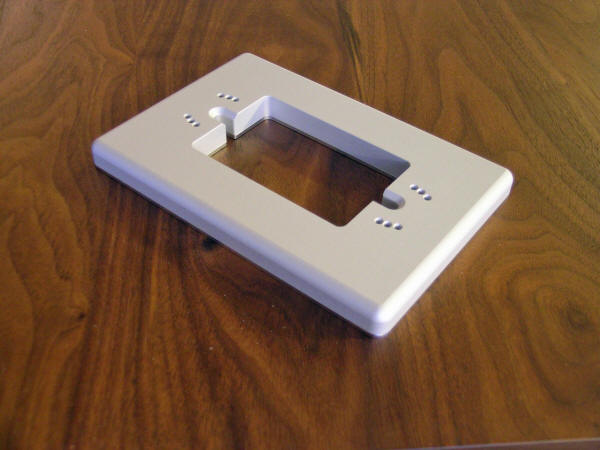

SAFETY CAUTION: The CB-1DB receptacle base plate is easy to install, but be sure you shut off the circuit breaker at the main service panel, and then test the circuit to be sure it's off, before you proceed with installing the CB-1DB. You don't want any power going to the receptacle while you install the CB-1DB, otherwise you could have one of those zap & thud moments that will end your audio pursuits forever. You've been warned!
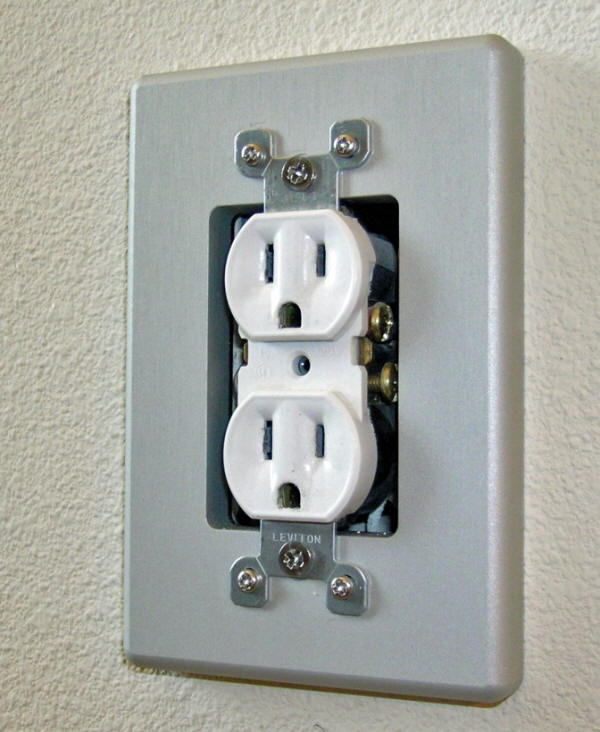
After shutting off the power to the receptacle all you do is remove the outlet cover plate, unscrew the outlet from the outlet box, slip the CB-1DB between the two, and then screw everything back down. Then you can proceed to installing the CFRP-1F carbon fiber outlet plate to finish the job (below).
The Acoustic Revive CFRP-1F Carbon Fiber Outlet Plate - $275 US
The CFRP-1F outlet plate cover covers the exposed outlet that is screwed down on the CB-1DB receptacle base plate, and they are designed to work as a set. Like the CB-1DB receptacle base plate, the CFRP-1F outlet plate cover is of ultra-high quality, is beautifully crafted of carbon fiber, and is treated on its backside with a vibration damping material developed at the Tokyo Institute of Technology, and that dissipates vibrational energy from electrical energy by converting it to heat energy.

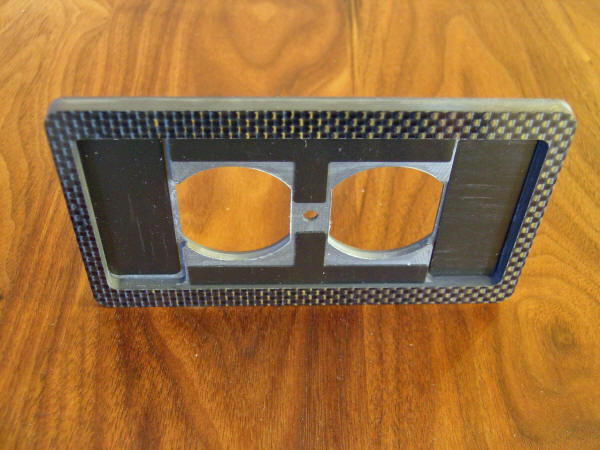
The Acoustic Revive CS-F2 Outlet Stabilizer - $225 US
The CS-F2 Outlet Stabilizer is about the size of volume control on a preamp, has AC prongs on its backside, and plugs directly into a unused wall outlet, power distributer (like the RPT Ultimate Power Supply Boxes), or any piece of equipment that has an AC-style receptacle, to damp the vibration coming through the AC mains connection, thereby reducing the noise and distortion introduced into audio equipment that reduces sound quality.
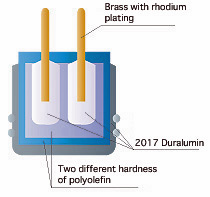
Like the CFRP-1F outlet plate cover and CB-1DB receptacle base plate, the CS-2F outlet stabilizer uses multiple materials for vibration control. The outer casing of the CS-F2 is made of 2017 Duralumin, and internally it contains two kinds of polyolefin polymers. The AC prongs that are imbedded into the polymer core are rhodium-plated brass. As with the CFRP-1F carbon fiber outlet plate cover, CS-F2 outlet stabilizer has same damping material applied to it that was developed at the Tokyo Institute of Technology as described for the CFRP-1F.
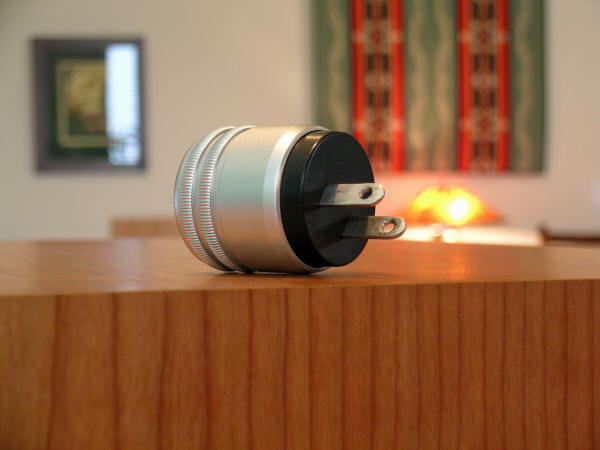
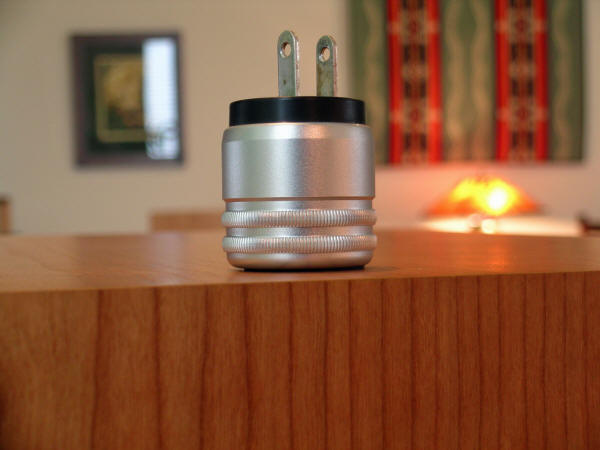
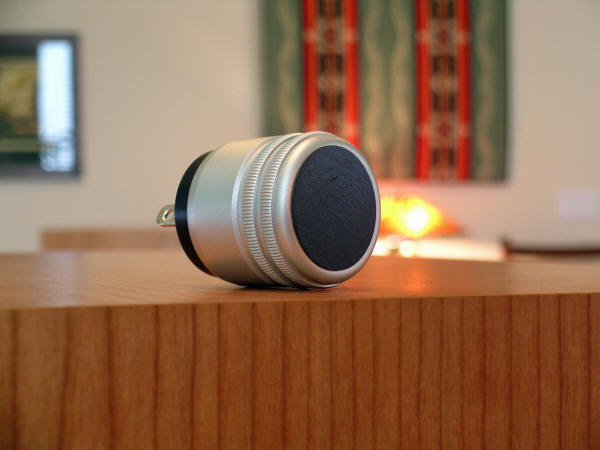
The CS-F2 outlet stabilizer can be used with the CFRP-1F outlet plate cover and CB-1DB receptacle base plate as an integrated vibrational treatment system for an AC outlet, or alternatively, it can be applied by itself to any open AC outlet.
Listening Impressions
Let's start with the combination of the CFRP-1F outlet plate cover, CB-1DB receptacle base plate, and the CS-2F outlet stabilizer. When I installed the CFRP-1F outlet plate cover and CB-1DB receptacle base plate I used my stock outlet because that's what I had on hand, but it's clearly not the best choice, as it doesn't grip power cord prongs nearly as well as the Oyaide outlets do. I recommend that when you install the Acoustic Revive CFRP-1F and CB-1DB that you spend an extra hundred dollars or so and install an Oyaide R-1 outlet at the same time – just consider them to be a set. I'll try to report back in the future about the additional benefits brought by an Oyaide R-1 over the CFRP-1F plus CB-1DB with my stock outlet.
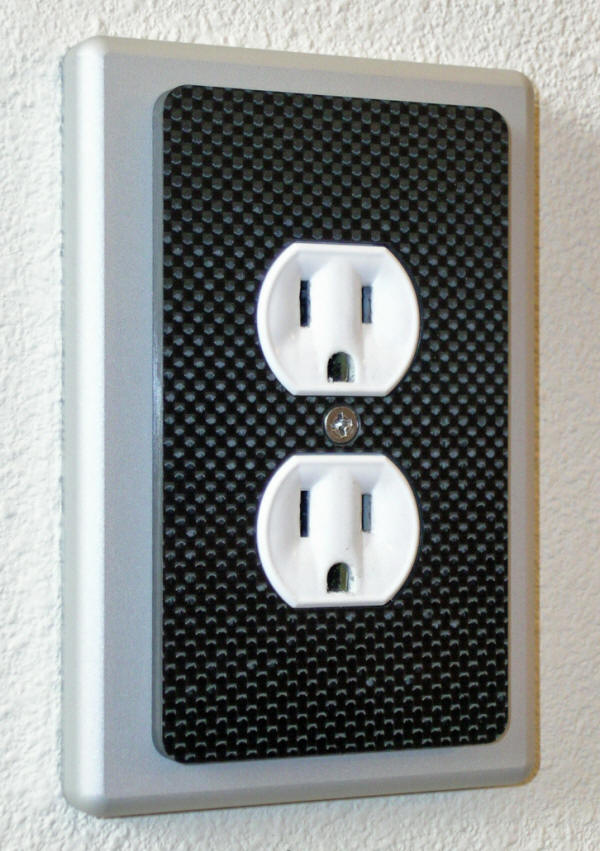
So what about the CFRP-1F outlet plate cover and CB-1DB receptacle base plate? I always listen to accessories before I read their product descriptions so that I'm not swayed by any manufacturer claims. Then after getting a firm idea of what I'm hearing I go back and investigate the technology and claims for the products, and see how that lines up with what I'm hearing. So I guess if you read my review backwards, it would more closely parallel what my actual timeline of experience with the product was!
Skeptic that I am, I really didn't expect to hear much of a difference after installing CFRP-1F outlet plate cover and CB-1DB receptacle base plate. It's amazingly good looking of course, but I just figured it would provide a more stable platform for plugging in my cables, but I didn't expect a tangible sonic improvement. After getting the CFRP-1F and CB-1DB installed, my equipment cabinet put back in place, and all my equipment plugged back in and turned on to warm up, I wandered off to do some other things while everything warmed up.
After a bit I came back to my system, and sat down with a cup of coffee for a little listening session. I cued up some music and—Holy Smokes!—I had another Acoustic Revive headline on my hands! I listened to what was going on with the music and the sound, and I just had to shake my head in astonishment: Transparency had opened up; the sense of space had increased, there was more recorded detail in evidence, the bass lines became deeper and more articulate, musical notes trailed off with more realistic decay, the timbral signature of the body of the instruments becoming more evident (e.g. wood, brass), and the music came across as more naturally ‘live' with more ‘snap' to the notes and greater musical flow. There was one down side though; there was a increase in sibilance that necessitated I toe out my Harbeth 40.1s a bit to eliminate it. Once having done that, though, it was all good – more music, more sonics razzmatazz, more fun.
Then I went back and read about the CFRP-1F outlet plate cover and CB-1DB receptacle base plate and went "Ah, now I get it!" The net effect is similar to putting your equipment on an isolation device: everything just opens up sonically and musically. The caveat is that the change is significant enough that you may have to refine your system setup to take full advantage of the improvement. Not quite plug-and-play, but close. Speaking of plug-and-play, that brings me to the CS-2F outlet stabilizer. All you do is plug it into the outlet (or power strip et al) and sit back and listen. Truly a plug-and-play device if ever there was one, and one that boosts performance in the same sort of way as the CFRP-1F outlet plate cover & CB-1DB receptacle base plate combo do. I consider them all to be an integrated set, and that's how I used them, but of course the CS-2F can be used separately as well. I suspect that using multiple CS-2Fs in open outlets would help as well, but having only one to try I couldn't validate that, so any feedback from those in the field that have tried that approach would be welcome.
Ok, lets talk about the Acoustic Revive RWL-3 Acoustic Conditioner panels now. Honestly, I've never been all that crazy about most room treatments as I've found they damp down the room too much and make the music sound dull and dead. I prefer a somewhat live room, as it makes the music seem more alive in the sense of real people playing real music. The truth is that I have a difficult primary listening room (my living room). It has a high cathedral ceiling and opens into two other fairly large rooms on the right sidewall and behind the listening position. There's only one room orientation that seems to work well for my system, the others introducing more issues than benefits.
I've also purchased a new pair of Harbeth Monitor 40.1 loudspeakers recently, and have been optimizing my system and room setup for them. The RWL-3 panels aren't Band-Aids to correct for poor system setup, they are devices to optimize the acoustic space of your listening room, and so I worked to achieve the best speaker setup possible in my room first without them. Then I began experimenting with placement of the RWL-3s, and after I was satisfied with their placement, I did the final dialing in of the speakers.
A tip for those with Harbeth Monitor 40.1s—I used the three-step speaker installation technique outlined by Jim Smith in his book Get Better Sound and it provided excellent results: I set up an installation grid, determined the position of the loudspeakers for the deepest and smoothest bass (using the naturally recorded string bass from Duke Ellington's and Ray Brown's This One's for Blanton), and finally voiced the system for tone (the other option being optimizing for audiophile-style sound effects like imaging, soundstaging, and the like, which I don't consider as important as tone).
I keep thinking I should get a real-time spectrum analyzer like the Audio Control SA3051 to aid in this sort of endeavor, but I haven't made it that far down my wish list yet, so I used the next best thing I had available—my ears. I ended up with the Harbeths out about 6.5 feet from the wall behind them, about 9.5 feet apart, and toed out somewhat from the listening axis. The listening position is about 12 feet on the diagonal from the front of the Harbeths. This positioning of the Monitor 40.1s gives me the most natural presentation of bass & tone in my room, a deep & moderately wide soundstage, and quite a sense of an expansive soundspace (if it's on the recording that is).
You can use any number of Acoustic Revive RWL-3 acoustic panels, from one to many, in the treatment of your room (see the accompanying diagram from Acoustic Revive). I had three of the RWL-3 panels to experiment with for the review, and in my room I found the best position for them was to have two sitting on the floor (as opposed to attached to the walls, which you can do too) in the front left & right corners of my listening room, and angled into the listening position so that only their front face was visible. I placed the third panel on the left sidewall in front of a glassed-in gas fireplace.


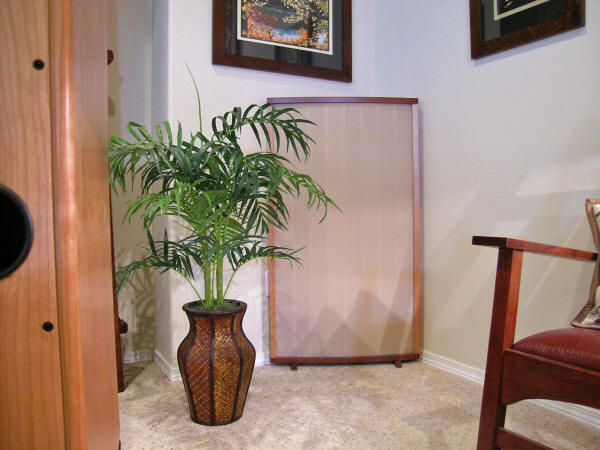
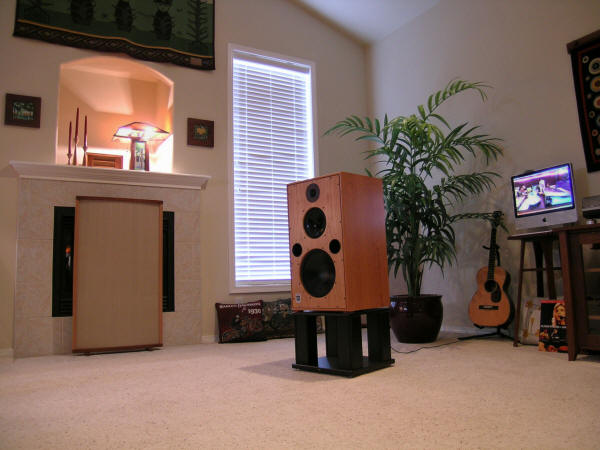
The most obvious effect of placing the three RWL-3s in my listening room was a noticeably more visceral and vivid presence of the instruments and musicians in my room. The recorded perspective seemed closer, the amount of detail increased, the recorded acoustic was more obvious, imaging effects increased, the soundstage increased in depth, and the bass became more articulate and dynamic.
The overall result of the three RWL-3s was similar to what I've gotten when I moved to a more near-field listening arrangement from a more distant one. The reason for moving to a near-field listening arrangement is to remove the room from the equation so you're just hearing what your Hi-Fi rig can do without being compromised by the room. So what the RWL-3s provided in my room was essentially a near-field style of listening experience to my non near-field equipment setup. That's an amazing result really, and seems to validate Acoustic Revive's claims for the RWL-3 being able to remove the room from the equation.
The changes are significant enough sonically that re-optimizing your speaker setup will likely be necessary. For example, I found that moving my speakers a little closer together (6 inches) intensified the tone color and smoothed things out a bit while maintaining the sonic improvements wrought by the RWL-3s. An additional benefit of the addition of RWL-3s was that I found I could reduce the volume and still get a remarkably full and vivid presentation, which could be of benefit to those who need to be considerate of neighbors or significant others during listening sessions.
Summary
The Acoustic Revive RWL-3 acoustic panels, the CFRP-1F outlet plate cover, the CB-1DB receptacle base plate, and the CS-2F outlet stabilizer are powerful devices for room & system tuning and they can transform the sound of a Hi-Fi system, and so much so that it is likely you will have to re-optimize your equipment setup to get everything out of your system that these devices will make possible. That's a little different compared to the other Acoustic Revive products I've reviewed to date, which I've just inserted into my system (or room) and reaped the benefits with no additional tweaking required.
The Acoustic Revive RWL-3 acoustic panels are a fascinating product in that they provided what is in essence a near-field style of listening experience to my non near-field style of equipment setup, seemingly removing my room from the equation. That's amazing really, and I've never run across any kind of room treatment that has a similar effect on the listening experience. The RWL-3s don't damp down the musical life of a recording like many absorptive treatments do. If anything they do just the opposite by injecting liveliness & color that brings life to the music.
I consider the CFRP-1F outlet plate cover, the CB-1DB receptacle base plate, and the CS-2F outlet stabilizer as an isolation system. In combination they have an overall effect similar to putting an isolation rack under your equipment. The transparency of my system opened up; the sense of space increased, there was more recorded detail in evidence, the bass lines became deeper and more articulate, the musical notes trailed off with more realistic decay, and the timbre of instruments became more realistic.
What can one say about such innovative and powerful devices like the Acoustic Revive RWL-3 acoustic panels, the CFRP-1F outlet plate cover, the CB-1DB receptacle base plate, and the CS-2F outlet stabilizer? I'd say ‘Highly recommended!' about covers it.
Pricing: The Acoustic Revive RWL-3 acoustic panels are $1395 US each, the CFRP-1F outlet plate cover is $325 US, the CB-1DB receptacle base plate is $275 US, and the CS-2F outlet stabilizer is $225 US.
Quality of construction: The Acoustic Revive RWL-3 acoustic panels, the CFRP-1F outlet plate cover, the CB-1DB receptacle base plate, and the CS-2F outlet stabilizer are all built to astonishingly high standards.
Condition of products received: Perfect.
Human interactions: Yoshi Hontani (Acoustic Revive exporter) is the best person to work with I can imagine. He is expedient, courteous and helpful. The same goes for Aki Monobe of Acoustic Revive and US importer Joe Cohen of the Lotus Group. A class act all the way around!
Acoustic Revive website: www.acoustic-revive.com/english/index.html
US importer's website: www.lotusgroupusa.com
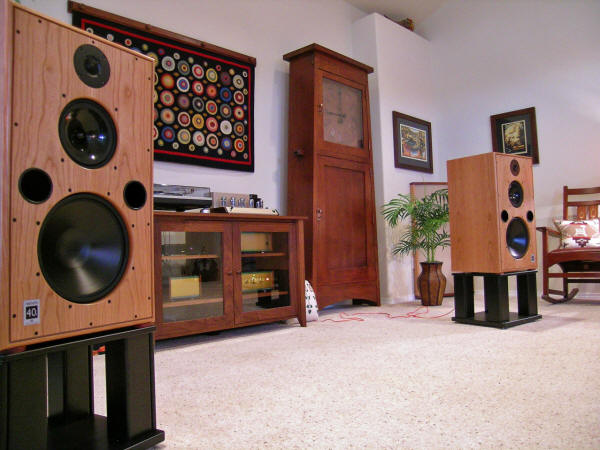
Jeff Day's Associated Equipment
Digital: Apple iMac, Mhdt Labs Paradisea+ Vacuum Tube USB DAC (using various NOS GE, WE, Bendix, or Tung Sol vacuum tubes), Acoustic Revive Power Reference power cables on both, plugged into an Acoustic Revive RPT-2 Ultimate Power Supply Box.
Preamplifier: Leben RS28CX full function vacuum tube preamplifier (with MM phono stage), Leben RS28PX vacuum tube power supply in a separate chassis. Acoustic Revive RGC-24 Ground Conditioner attached to the grounding post on the back of the RS28CX chassis. RS28CX interior is treated with Acoustic Revive QR-8 Quartz Resonators in strategic locations. Unused RCA connections on the RS28CX are fitted with Acoustic Revive Shorting Plugs (SIP-8F) with QR-8 Quartz Resonators applied to their ends. An Acoustic Revive Power Reference power cable is used on the RS28PX, which in turn plugs into an Acoustic Revive RPT-4 Ultimate Power Distributor. The RS28PX power supply sits on a quartet of Acoustic Revive Pure Smokey Quartz Insulators (RIQ-5010), and the RS28CX preamp section on a quartet of Pure Quartz Insulators (RIQ-5010W).
Amplifier: A Leben CS-660P vacuum tube power amplifier, used with an Acoustic Revive Power Reference power cable, is plugged into an Acoustic Revive RGC-4 Ultimate Power Supply Box. Various types and brands of power tubes are used in the CS-660P: KT66, KT77, KT88, 6L6GC, 5881, EL34, and 350B. Either NOS Tung Sol or Sylvania valves are used as inputs/drivers.
Speakers: Harbeth Super HL5's, 18-inch Skylan stands, with 3 Acoustic Revive QR-8 Quartz Resonators between each speaker and its stand. The Harbeths are treated with QR-8 Quartz Resonators on the driver mounting plates and the speaker ports.
Cables: Audio Tekne ARC-500 interconnects.
Equipment Cabinet: McKinnon Furniture Bellevue Symphony walnut cabinet.
Room And System Tuning: Acoustic Revive REM-8 EMF Canceller, RCI-3 Cable Insulator, RD-3 Demagnetizer, RGC-24 Ground Conditioner, RIO-5 II Minus Ion Generator, Ultra Low-Frequency Pulse Generator R-77, Acoustic Conditioner RWL-3, Pure Smokey Quartz Insulator RIQ-5010 and Pure Quartz Insulator RIQ-5010W, Shorting Plugs SIP-8F, RPT-2 and RPT-4 Ultimate Power Distributors, CB-1DB Receptacle Base Plate, CFRP-1F Carbon Fiber Receptacle Plate, Power Reference power cable, CS-2F Outlet Stabilizer.
Listening Room: 20' L x 17' W x 17' H, sheet rock walls and cathedral ceiling, concrete slab floor (carpeted), open to a kitchen and dining room of similar size on rear wall, and open to an entry way on the right side wall.
